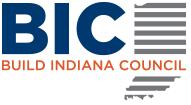Roads always seem to need repairs. Luna Lu is giving concrete the ability to “talk” and even heal itself. Her lab at Purdue University is developing technology that would allow concrete-paved bridges and highways to reveal more accurately when they need repairs and to come equipped with materials that respond to potential damage. More than one-third of U.S. bridges need repair work, according to a 2020 report by the American Road and Transportation Builders Association. Getting a better idea of when new concrete is ready to take on heavy traffic, for example, could prevent cracks caused by reopening roads too soon. Preventing cracks means fewer repair projects to replace the concrete, which would cut down on traffic typically held up by those projects. In 2019, Lu collaborated with the Indiana Department of Transportation to embed into three Indiana highways sensors that her lab developed. The highways include Interstate 465 near Indianapolis, I-70 near Plainfield and I-74 near Batesville. Self-healing concrete would be particularly useful during harsh winters. For roads in the U.S. Midwest, winter makes concrete freeze and thaw in cycles. When temperatures drop below 32 degrees F, water molecules on a road’s surface freeze and expand, cracking the concrete. These cracks lead to fissures over the course of several winters. Intelligent infrastructure is a young field. Through partnerships with other universities, Lu is working to bring together the researchers and resources needed to enable this type of infrastructure on a large scale.
Source: https://scienceblog.com/516459/enabling-highways-and-bridges-to-prevent-their-own-damage
Science Blog
Kayla Wiles, Purdue University
05/20/2020
